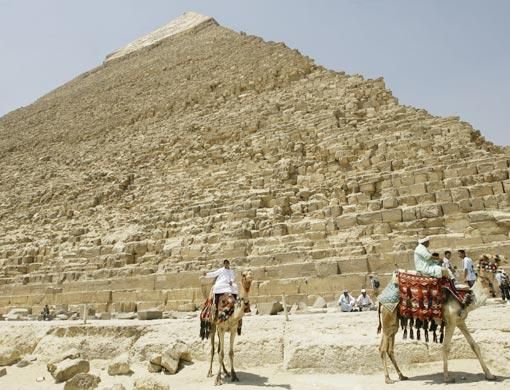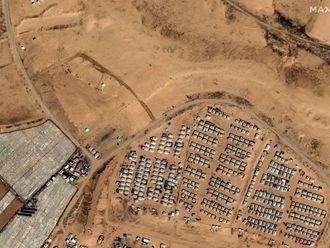Cairo: When Japanese Mori Kaizumi visited the Giza pyramids, one of the world wonders in 2001, he recalls that his "wonderful" experience of the 5,000-year-old site was diminished by pestering hawkers of trinkets.
"They would go to great lengths in order to force their wares on you and frequently disrupt your enjoyment of this unique place," Kaizumi told Gulf News.
Kaizumi is pleased to learn that the Egyptian Government is working on a three-phase project to make the Pyramid Plateau, some 30km south of Cairo, more friendly to tourists and more secure.
This week, Egyptian Minister of Culture Farouk Hosni opened the first stage of the $26 million project.
The first stage included the construction of electronic gates for visitors, an 18.5km chain-link fence featuring surveillance cameras and alarms. The fence is equipped with infrared sensors and motion detectors monitored around the clock at a control room. The surveillance system is based on 147 fixed cameras and 36 mobile cameras installed along the fence, in addition to 16 indoor cameras. Previous access to the area was free-for-all through a stone-paved route.
"The aim is to increase revenues from visits and protect the area from intruders and thieves," Major General Kareem Abdul Gaffar, a senior security official, told Gulf News.
According to him, earnings from visits to the area in 2006 - when the development project started - amounted to $17.5 million and reached $27.2 million last year.
Tourism is one of the key foreign currency earners for this country of 80 million. Since a bloody attack by militants on tourists in Luxor in Upper Egypt in 1997, the Egyptian authorities have beefed up security for foreign arrivals. Despite ensuing bombings in Sinai and regional turmoil, Egypt's tourism industry has shown resilience, with official statistics putting the overall receipts at $7.6 billion in 2007, up 800 million against the previous year. Egypt hopes to attract 14 million tourists a year by 2011.
The Giza area, which besides the famous three pyramids seats ancient tombs, is among the main attractions for foreign tourists.
"Arrangements are under way to contract a company specialised in operating electric carts to carry visitors from the point of arrival to the archaeological zone of the pyramids," Zahi Hawass, Egypt's chief archaeologist, told reporters on Monday.
He added that a certain location outside the archaeological area would be designated for camel and horse rides. "Souvenir vendors and camel drivers will not be allowed into the archaeological area," said Hawass.
The Pyramid Plateau is also famed for the Sphinx, a colossal statue of an imaginary creature having the body of a lion and the head of a man.
"The level of the underground water beneath the Sphinx has dropped by 10 centimetres," Hawass said. He added that a US-funded project is being worked out to remove the threat posed by the underground water to the centuries-old statue.
The two other stages of the project for developing the area feature a special lighting system, paving the nearby roads and upgrading the slums built over recent years in the vicinity of the area, according to officials.
"There will also be parking lots for tour buses, an information centre for visitors, a services complex comprising first-aid and police facilities, as well as souvenir stores at the entrance to and exit of the archaeological area," said Tarek Abul Nagaa, who is responsible for the project.
The plan has raised the concern of the locals, who earn their living from peddling trinkets to visitors.













